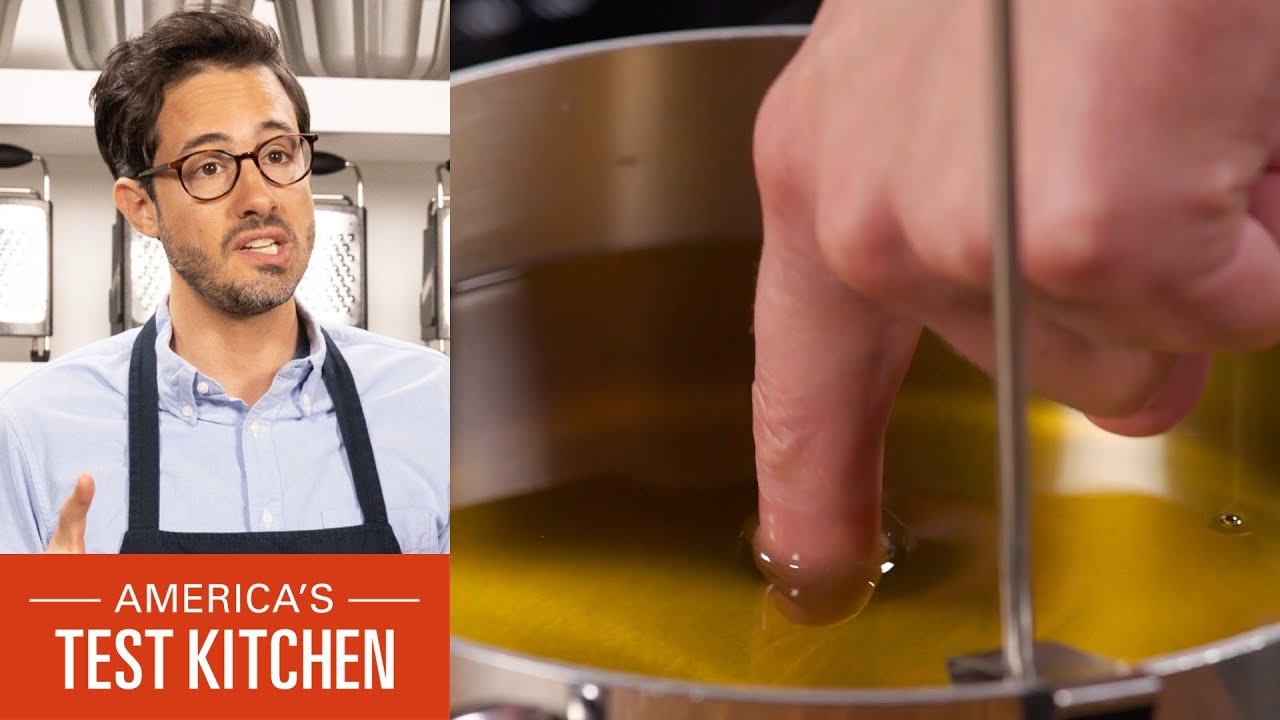Science expert Dan Souza reveals the science behind energy transference in liquids.
Get our recipe for Garlic Confit:
Get our recipe for Garlic Confit Butter:
Buy our winning Clip-On Probe Thermometer:
Buy our winning stockpot:
ABOUT US: Located in Boston’s Seaport District in the historic Innovation and Design Building, America’s Test Kitchen features 15,000 square feet of kitchen space including multiple photography and video studios. It is the home of Cook’s Illustrated magazine and Cook’s Country magazine and is the workday destination for more than 60 test cooks, editors, and cookware specialists. Our mission is to test recipes over and over again until we understand how and why they work and until we arrive at the best version.
If you like us, follow us:
Related posts
28 Comments
Leave a Reply Cancel reply
You must be logged in to post a comment.


Education 💯 🎉
Can you do a video on phase change energy? I'd enjoy learning how that relates to the "stall" when barbecueing
Wow – he's really selling the whole droopy-lip thing lately! Every thumbnail and reaction shot selected plays it up more than ever before.
ATK is my goto for food science. There are others as well but I love you'z guys 🙂
what is that cooker/stove?
So if I take a bath in 140 degree water, I’d be slowly cooking myself? Party!
This is wrong. The water doesn't contain more energy, it just transfers energy must faster than the oil does. This is also the reason it takes more energy to heat the water – it's like filling a bucket with a large leak in it; it will get full, but it will take longer than the bucket without or with a smaller leak. The extra energy it took to heat the water isn't in the water, it's already been lost to the environment.
It would be great if You would add degrees in Celsius in the video.
Europe is watching You too!
🙂
Someone is going to burn themself trying this.
What is the model of the Burton induction cooktop?
Curious what the recipe for this video is. How would one acquire index finger of Dan Souza sustainably?
More numerically, their heat transfer coefficients are different. Water has a heat transfer coefficient of 800-1600 W/m^2-K, whereas cooking vegetable oils can range in the low hundreds (and lower with more degradation, as well). That's why oil takes so long to cool off, too
Now I will have to find out where the difference in storing energy is coming from.
👍
Great content! Short clips of less than five minutes are always more tempting to watch than a 10 plus minute clip.
Sir I want to know about how to calculate calories in drink, food and cocktails
Great video. That's something I've never thought about. It makes a lot of sence. Thanks especially for this one.
You guys don't pay Dan enough.
Thanks so much!
Interesting – real science. Now to see Dan deep fry his boiling finger in the hot oil …
cool
Great explanation and demonstration 🙂
Cooking is food chemistry!
Dan, a real scientist. Using himself as test subject, even if it might cause him injury.
Dan is the man 😍😍😍
Greetings ATK
The Science Guy..
Salutations from California
Amazing
Very interesting. I never knew that.